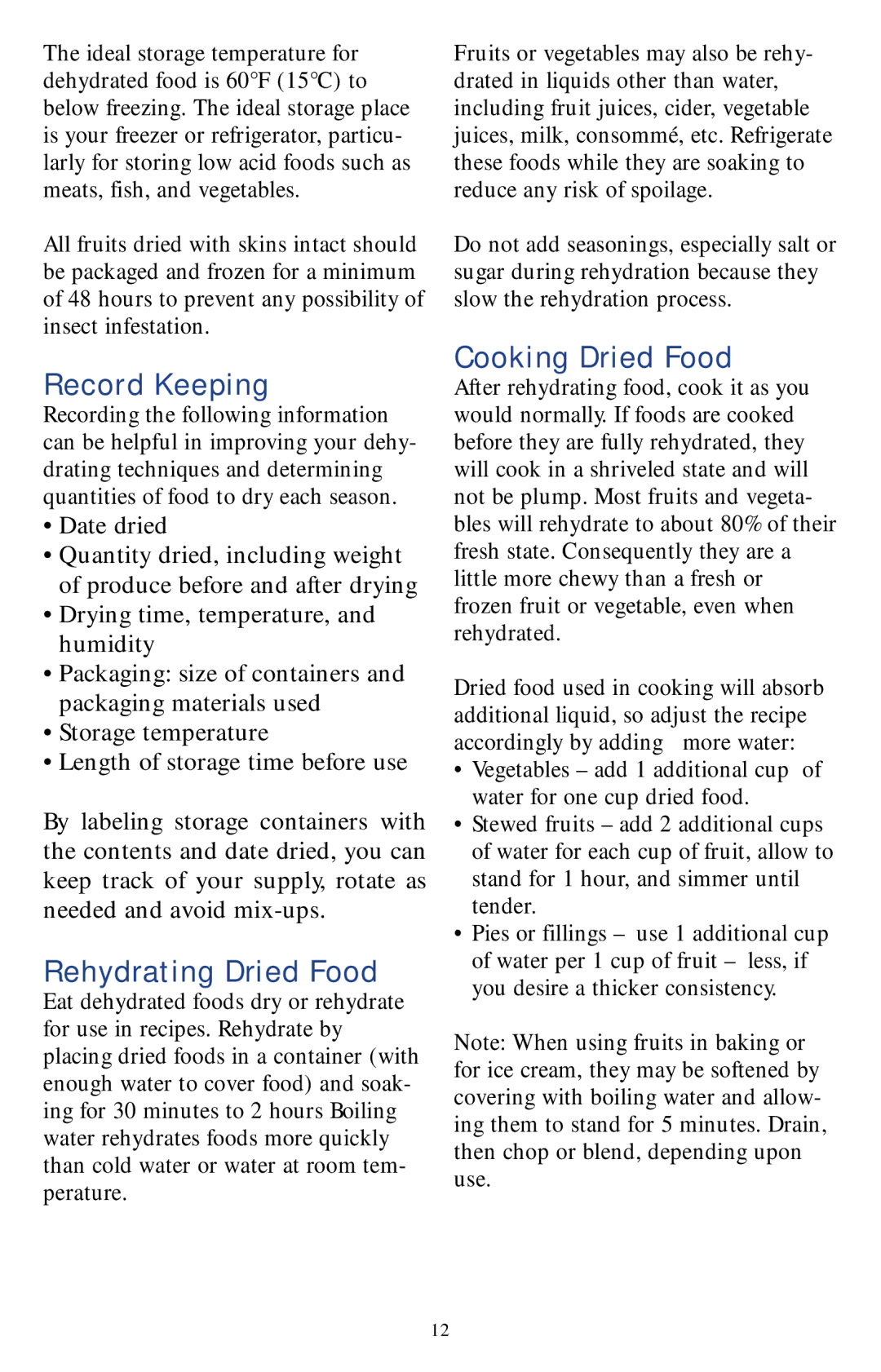Food Dehydrator specifications
The Nesco Food Dehydrator is a versatile kitchen appliance that enables home cooks and health enthusiasts to preserve food efficiently. With a reputation for reliability and quality, this dehydrator stands out in the market for its innovative technologies and user-friendly features.One of the most notable features of the Nesco Food Dehydrator is its patented Converge-Flow technology. This unique drying system utilizes a top-down airflow, which ensures that hot air is evenly distributed throughout the dehydrator. This design prevents the need for rotating trays, resulting in consistent drying without the hassle of manually rearranging food items. This technology allows for higher efficiency, leading to better results in less time.
The dehydrator boasts adjustable temperature settings, allowing users to control the drying process based on the type of food being processed. Ranging from 95 degrees Fahrenheit to 160 degrees Fahrenheit, these settings cater to various foods, from herbs and fruits to meats and vegetables. This flexibility makes the Nesco Food Dehydrator suitable for a variety of preservation needs.
Another characteristic of the Nesco Food Dehydrator is its capacity. With multiple trays that can often be expanded, users can customize the amount of food they wish to dehydrate at once. Many models come with five to twelve trays, providing ample space for large batches of fruits, jerky, or granola. Additionally, the trays are typically made from food-grade plastic, ensuring that they are safe for food contact and easy to clean.
The Nesco Food Dehydrator also typically includes a clear lid, allowing users to monitor the drying process without disrupting airflow. This design advantage not only enhances convenience but also contributes to energy efficiency by minimizing heat loss.
In summary, the Nesco Food Dehydrator is an excellent choice for those looking to extend the shelf life of their food while maintaining essential nutrients. Its advanced drying technology, adjustable temperature settings, ample capacity, and practical design features make it an indispensable tool in any kitchen. Whether you are preparing healthy snacks or creating homemade jerky, the Nesco Food Dehydrator guarantees a reliable and efficient drying experience.
